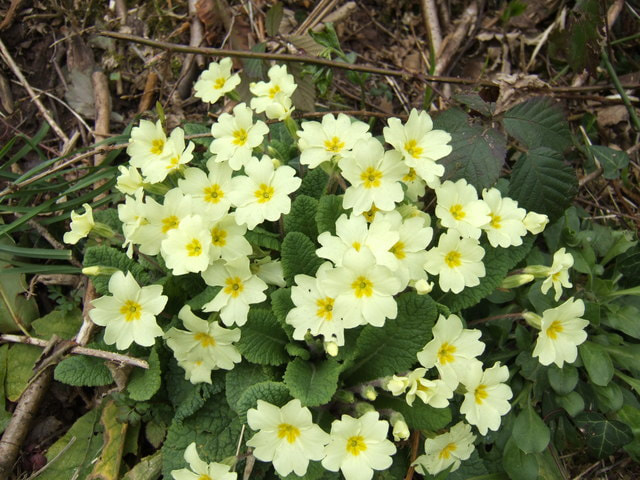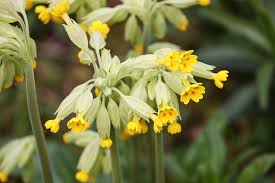|
Primrose Primula vulgaris Cowslip Primula verris Primrose Primula vulgaris
The banks and hedgerows brightened by cowslips and primroses is surely one of the most uplifting signs of spring arriving. The word ‘Primula’ means ‘first rose’ which is an adapt name for this delicate-looking yet hardy plant. Primrose represents a delicate love and is said to have been used for love potions. Shakespeare wrote ‘ pale primroses that die unmarried’. As is typical with much folklore this quote is rooted in the practical fact that primroses bloom early in the year when few insects are about and therefore some of the flowers are not pollinated. Primrose has many uses as a healing herb from gout and rheumatism to nervous headaches. It can be combined with bramble tops to help treat spots and sores on your face and as a relaxant can help ease toothache by rubbing the leaves directly on the tooth. As a snuff it can be used to ease migraine and as an ointment to treat cuts, bruises, chapped hands and chilblains. Take an infusion of flowers to help sleep. Cowslip can also be used similarly for as an ointment for wounds and also is an ideal to help with burns. Its flowers, like primrose can also be good for insomnia and a decoction of its roots can be used as an expectorant to help treat bronchitis and whopping cough. A syrup can be made of the roots, flowers and leaves to use as drops for the nose and ears to apparently help with deafness. Cowslip depending on distribution tends to be the second choice after primrose for much of the above remedies. Cowslips also continue the theme of spring and love with their delicately perfumed blooms attracting insects seeking nectar. It is the insects with long tongues such as bees and moths that are able to feed from cowslip. In Somerset it is known as ‘bunch of keys’ as it resembles a medieval set of keys. The story goes that St Peter dropped the keys to Heaven from which cowslips sprung. Maybe cowslip therefore can unlock the mysteries of the heart especially as it is said to strengthen the senses. Other Primula species include more specialist species such as oxslip a rare ancient woodland indicator that replaces primrose in dampish woods of clay soil especially in Eastern England. In the North of England mainly on limestone soils is a pink flowering Primula called the bird’s-eye primrose. The Scots primrose is a specialist of the highlands on short coastal turf resembling the bird’s-eye primrose but with deeper purple flowers. Species also hybridise to create the false oxslip (polyanthus), a cross species of primrose and cowslip which has bunches of flowers borne on a singular stalk like cowslip but the umbels are on both sides of the stalk. A rarer hybrid occurs in oxslip territory between oxslip and both primrose and cowslip.
0 Comments
Leave a Reply. |
Details
Poetry of flowersJoin me to explore the flora of the British Isles on this blog. My intention is to attempt to capture the unique quality and beauty of each species of flower, tree or shrub. For every species featured I will be growing many more wildflowers to celebrate the joy of their existence, their intrinsic conservation value and bewildering array of uses. For nearly 30 years I have noted, studied and explored wildflowers in the field much to the patience of the walker beside me. To share this passion is a heartfelt plea to respect, preserve and care for all British Wildflowers no matter how common they seem. Archives
February 2024
Categories |



 RSS Feed
RSS Feed
